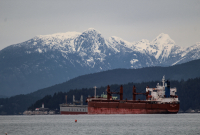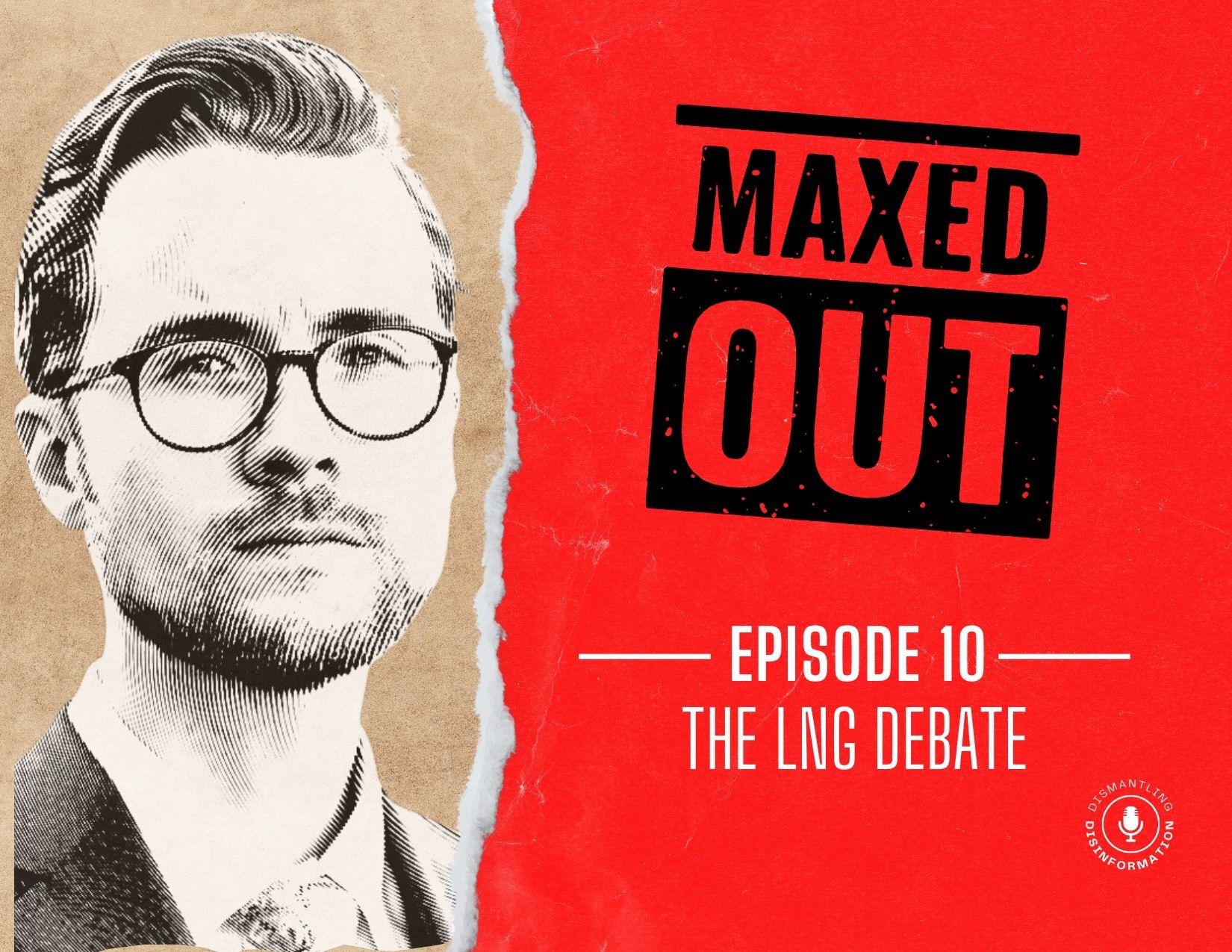Support strong Canadian climate journalism for 2025
There’s a scary connection between liquefied natural gas (LNG) and the yearly ritual of watching horror movies and kiddies at the door for Halloween — trick or treat.
Much of the natural gas debate over the past years has resulted in a relatively successful PR “trick” campaign to brand LNG as a “treat” for communities and the natural environment. It’s even in the name: natural. The success of this PR trick, especially in B.C., has led to a massive buildout underway of LNG fracking facilities. The LNG Canada project will be B.C.’s largest greenhouse gas (GHG) emitter when it comes online in 2025 and when its Phase 2 is built in 2030, it will be 20 per cent of B.C.’s total 2020 emissions.
The LNG and (un)natural gas Halloween metaphors don’t stop there. A colleague in Brazil who works closely on these issues likens the LNG industry to Dracula. The LNG industry is sucking the local environment and economy dry in order to export energy to developed countries, leaving behind polluted waterways, increased climate emissions and social issues — all driven by the overconsuming appetite of rich countries.
According to Nicole Oliveira, executive director of Arayara, “There is a daunting challenge of confronting and resisting established oil and gas infrastructure once it has taken root in a locale. The term "Draculized" in this context could refer to the monstrous, entrenching and insidious nature of the industry, likening it to the immortal and hard-to-kill nature of the fictional character Dracula. It signifies how oil and gas projects, once initiated, can become deeply embedded in the economic, social and political fabric of the regions where they operate, making them exceedingly difficult to challenge, decommission or eliminate.”

One of the main reasons the Say No To LNG campaign was launched this year on Fossil Fool’s Day was to link this LNG industry “trick” to efforts behind decarbonizing the marine shipping industry. Ninety per cent of goods are transported by ship and shipping accounts for nearly three per cent of GHG emissions — ranking sixth on a global emitter scale.
If left uncontrolled and unrestricted, GHG emissions from shipping could grow to 17 per cent by 2050. To decrease its reliance on heavily polluting fuels, the ocean shipping industry is considering increased use of LNG. What they’re not telling you is that LNG is mainly methane, a potent GHG responsible for 30 per cent of global warming. LNG-powered vessels have increased methane emissions in the shipping sector by 150 per cent in six years.
Taking off the Halloween mask of this LNG PR greenwashing trick, we can see a very different story about the true impacts of fossil gas. On the heels of a new report from the International Energy Agency (IEA), it’s become clear that LNG’s wide-scale deployment in the shipping sector would worsen our climate crisis exponentially in the coming years. The IEA says we need immediate methane cuts from the fossil fuel industry to prevent nearly one million premature deaths by mid-century.
Much like an invisible ghost, methane has been shown to leak into the atmosphere when used in LNG ship engines. When accounting for the full life cycle, including upstream and downstream emissions of climate pollutants, LNG as a marine fuel emits 70 to 82 per cent more greenhouse gases than traditional marine diesel fuel. And the ghostly tales don’t stop there. Every year, LNG is associated with over 775,000 asthma-related hospital visits, 20 million tons of crops lost, and 73 billion hours of labour lost from extreme heat.
In Canada, rural and Indigenous communities are significantly impacted by LNG expansion on land. LNG production is linked to contaminated groundwater and adverse psychological effects from local noise, vibration and light pollution. Violence against Indigenous Peoples also occurs near pipeline construction and fracking sites.
LNG development undermines our collective capacity to meet climate targets and safeguard wildlife, as a new report extensively illustrates concerning whale ship strikes in B.C. The use of LNG as a marine fuel contradicts Canada’s support for the Global Methane Pledge, which aims to cut methane emissions by 30 per cent between 2020 and 2030; Canada’s commitment to the Paris Agreement goals to limit temperature rise to 1.5 C; and Canada’s target of reducing oil and gas methane emissions by at least 75 per cent relative to 2012 levels by 2030.
The shipping industry can reduce its climate impact by implementing operational and technological measures on ships, rather than relying on LNG as a short-term solution. By reducing energy and fuel use through measures like speed reduction of 10 per cent across the global fleet, we can achieve significant reductions in GHG emissions, noise pollution and the risk of ships colliding with whales. These measures are widely available, feasible in the sector and have the potential to address the climate, pollution and biodiversity crises simultaneously.
Fortunately, the shipping sector will soon find itself without a choice. The recent agreement reached at the International Maritime Organization regarding a new GHG reduction strategy, along with the inclusion of methane in the life cycle assessment of marine fuels, has the potential to bring an end to this LNG nightmare.
By 2030, the use of all forms of LNG as a marine fuel is anticipated to become infeasible due to the exorbitant costs and uncertainties with scaling up bio and e-LNG (renewable LNG). These alternative sources of LNG will be seven times more expensive than fossil LNG.
With the unprecedented wildfire season experienced by Canadians this summer, the horrors that lie ahead are clear. Decisive action must be taken to act on the climate crisis and reduce methane emissions now.
Together, let's say no to the trickery of LNG and embrace a more sustainable future.
By Andrew Dumbrille, Say No to LNG, Canadian campaigner, and Elissama Menezes, Say No to LNG, global director. Elissama and Andrew are also co-founders of Equal Routes, a non-profit centring communities and rights holders to create a sustainable and equitable marine shipping sector.







Comments
It's been called "natural gas" for many decades, because it's whatever mix of methane, ethane, and some propane that happened to come out of that well, and was used in its "natural" state. If you run it through a plant to separate out the ethane because it sells for more, it becomes unnatural.
And the name is not why we got an LNG plant. It's because it makes a lot of money.